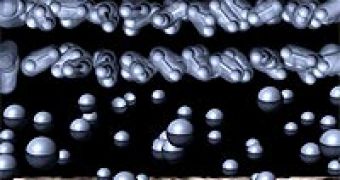Anyons are exotic particles that exist in two-dimensional quantum liquids. A quantum liquid (fluid) is a state of matter where, under very high pressures and low temperatures, electrons condense, thus theoretically allowing electrical current to flow forever with a complete absence of voltage.
They remain liquid at absolute zero temperature and pressure, due to their large zero-point energy and the small interatomic forces.
Anyons have been studied by now by scientists in isolated conditions, "[...]when there are a few of them and they are far separated," says Adrian Feiguin, a researcher at Microsoft Research Station Q at the University of California, Santa Barbara. "One of the questions we wanted to address was: What happens if you have many anyons close together?"
However, in a two-dimensional state, they are not stable, continuously ranging from fermions to bosons instead of in a three dimensional state, where each of the three exotic particles are confined to their specific structure.
"Topological states with non-Abelian anyons describe a new phase of matter. When there are excitations in the topological quantum liquids, there are gaps between the excitations and the ground state," Feiguin explains. "The topological origin and the gap protect the anyons from environmental decoherence."
To find out exactly how anyons interact when they come close together, scientists constructed and solved a model of a chain of interacting non-Abelian anyons. They discovered that their anyons formed a new quantum liquid which is equivalent to a special type of quantum spin chain which is, in Feiguin's words, "described by a classical model at the critical point."
Moreover, he says that the researchers are continuing their investigation because "there are many models of interacting anyons that you can build."
Future applications will depend on more experiments that are yet to come.

 14 DAY TRIAL //
14 DAY TRIAL //